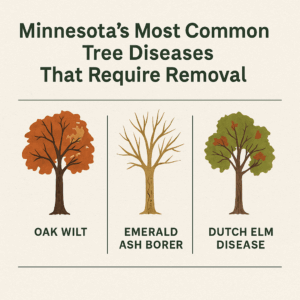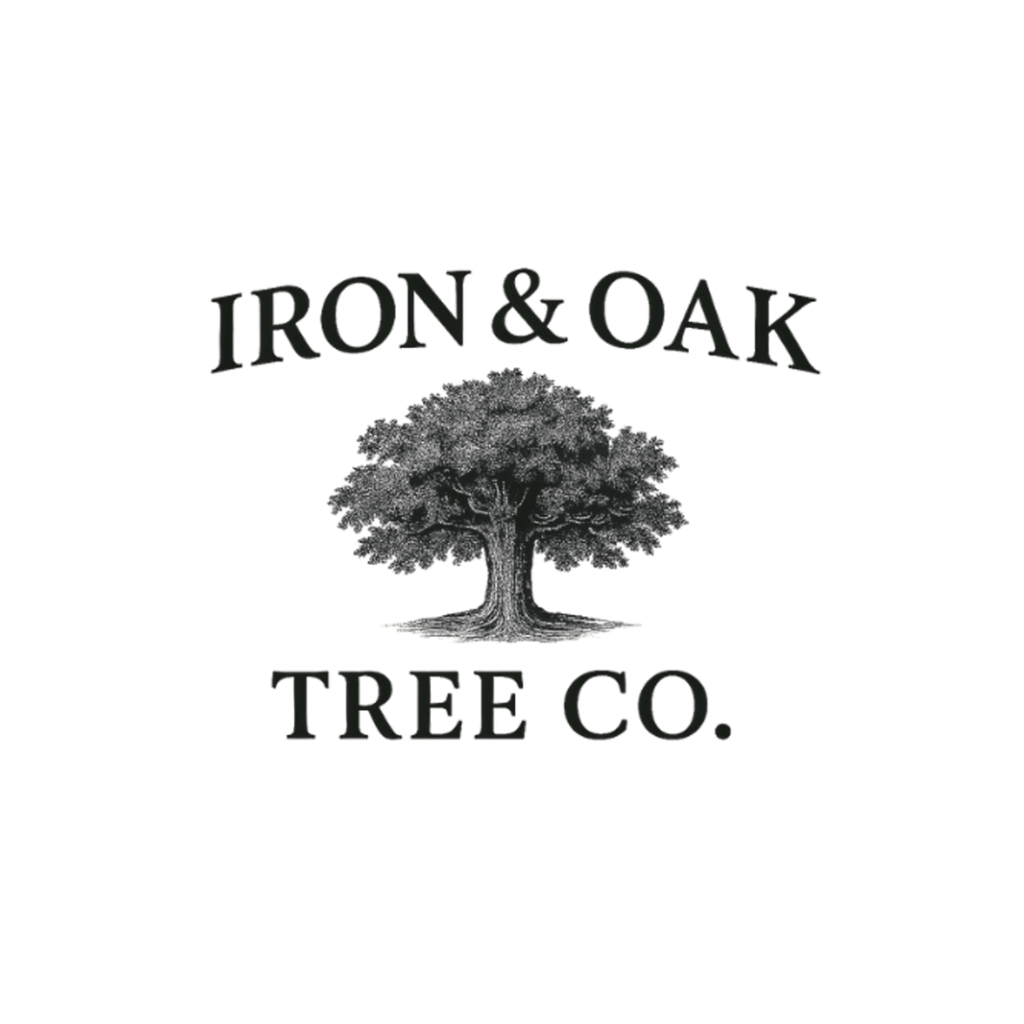Minnesota’s Most Common Tree Diseases That Require Removal
Minnesota homeowners take pride in their trees. From towering oaks to stately ash, our landscapes define our neighborhoods. Unfortunately, tree diseases can quickly turn a healthy tree into a safety hazard. In many cases, trimming isn’t enough—full removal becomes necessary to protect your property and prevent the spread of disease.
In this article, we’ll cover the most common tree diseases in Minnesota that require removal, the warning signs to look for, and when it’s time to call a professional.

Oak Wilt in Minnesota
Oak wilt is one of the most destructive tree diseases in the state. Once an oak is infected, the fungus spreads quickly through root systems and beetles that carry spores.
Signs of Oak Wilt:
-
Leaves wilting and turning brown from the top down
-
Premature leaf drop in mid-summer
-
Neighboring oaks showing symptoms within weeks
Unfortunately, oak wilt is almost always fatal to red oaks. Trimming alone will not stop the disease. Once infection sets in, the only effective solution is removal of the infected tree to stop it from spreading.
➡️ Learn more about oak wilt from the University of Minnesota Extension.
If you suspect oak wilt in your yard, contact Iron & Oak’s tree removal services immediately before nearby oaks are affected.
Emerald Ash Borer in Minnesota
Emerald ash borer (EAB) has devastated Minnesota’s ash tree population. This invasive beetle burrows into the tree, cutting off nutrient flow and slowly killing it.
Signs of Emerald Ash Borer:
-
Canopy dieback starting at the top of the tree
-
S-shaped tunnels under the bark
-
D-shaped exit holes from emerging beetles
-
Increased woodpecker activity
Once EAB infestation reaches a certain point, treatment is no longer effective. Removal is often the only option to prevent the beetles from spreading to healthy ash trees nearby.
➡️ See the latest EAB updates from the Minnesota Department of Agriculture.
Request an ash tree removal estimate →
Dutch Elm Disease in Minnesota
Minnesota has a long history with Dutch elm disease (DED). This fungal disease is spread by elm bark beetles and root grafts, causing rapid decline in infected trees.
Signs of Dutch Elm Disease:
-
Sudden yellowing and wilting of leaves
-
Brown streaks visible under the bark
-
Branch dieback starting in the upper crown
While pruning infected branches can help in very early stages, most infected elms require removal to protect surrounding trees.
When Is Trimming Not Enough?
Trimming works when the infection is isolated to a small branch or when damage is cosmetic. But if more than 30–40% of the canopy is affected, or if the trunk/root system shows clear signs of disease, removal is the safest option.
Tree Removal Timelines for Diseased Trees
-
Oak Wilt: Immediate removal recommended to stop root spread.
-
Emerald Ash Borer: Remove infested trees before beetles emerge in spring to reduce spread.
-
Dutch Elm Disease: Removal within weeks of diagnosis to protect nearby elms.
Protect Your Property and Community
Diseased trees aren’t just unattractive—they’re dangerous. Dead or weakened trees are more likely to fall during Minnesota storms, putting homes, vehicles, and families at risk.
At Iron & Oak, we provide:
-
Expert disease diagnosis
-
Safe tree removal
-
Emergency removal for storm-damaged or hazardous trees
-
Cleanup and stump grinding
If you’re worried about oak wilt, emerald ash borer, or Dutch elm disease, don’t wait. Protect your yard and your community.
Contact Iron & Oak for professional tree removal in Minnesota →
